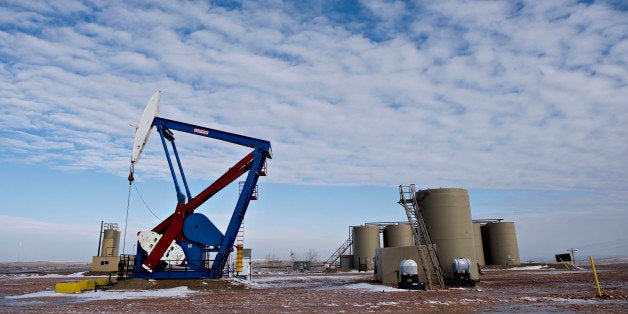
From the Atlantic Coast to the Arctic, It's Drill, Baby, Drill
If Sarah Palin were president, we'd know just what it was: a drill-baby-drill administration. Of course, there's no mama grizzly in the White House, yet these last years have been a grizzly tale of the expansion of American oil and natural gas exploration and drilling from the fracking fields of Texas and North Dakota to the energy-rich Gulf of Mexico. Most recently, the southern Atlantic seaboard, where there are an estimated untapped four billion barrels of oil and 37 trillion cubic feet of gas, was provisionally opened for future exploration and drilling. So keep in mind that it wasn't under Palin's tutelage but Barack Obama's that the United States experienced its staggering resurgence in the oil and gas sweepstakes, turning itself into "Saudi America."
The math, which this president undoubtedly knows well, isn't that complicated. According to climate change scientists, of all the fossil fuel reserves believed to be left on the planet -- and the ability of oil companies to successfully tap ever more extreme deposits has been a regular surprise in these years -- scientists estimate that 80 percent must remain underground to prevent a planetary disaster. And yet, it seems that ever fewer waters off ever fewer American coasts are now sacrosanct. Back in the presidential campaign of 2008, Obama criticized his opponent, John McCain, for pushing the expansion of offshore drilling. "It would have long-term consequences for our coastlines... When I'm president, I intend to keep in place the moratorium." And he was right that to expand significantly into coastal waters is indeed dangerous. Sooner or later, it ensures more BP-style Gulf of Mexico environmental catastrophes, as well as the everyday cumulative disasters that, as marine biologist Carl Safina has written, simply come with oil company exploration and extraction efforts.
It's true that a 2011 moratorium on new drilling and lease sales off the West Coast remains in place until 2018, but in addition to the Gulf of Mexico and the southern Atlantic, the most forbidding and dangerous waters off any American coast -- those in the Arctic -- are again in play. You would think that this would be an open-and-shut no-go case for reasons that Subhankar Banerjee, leading Arctic photographer, environmentalist, and author of Arctic Voices: Resistance at the Tipping Point, lays out vividly today in "To Drill of Not to Drill, That Is the Question." (Back in 2003, a show of his photos on Alaska's Arctic National Wildlife Refuge at the Smithsonian Institution's National Museum of Natural History was scandalously all but cancelled at a moment when the Bush administration was eager to open that pristine wilderness area to exploitation.)
If you're talking about extracting extreme fossil fuels from an incredibly rich environment that is utterly treacherous and would be the single most obvious reserve on the planet to simply keep in the ground, this has to be the place. And yet the president has long shown a special interest in those Arctic waters and Royal Dutch Shell's urge to drill in them. Now, at a time that would seem inauspicious as well as unappealing, given the glut of new American oil on the market (and falling oil prices), the Obama administration, despite a recent bow to Arctic preservation, stands at the edge of once again green-lighting a Shell foray into Arctic waters. You explain it.
